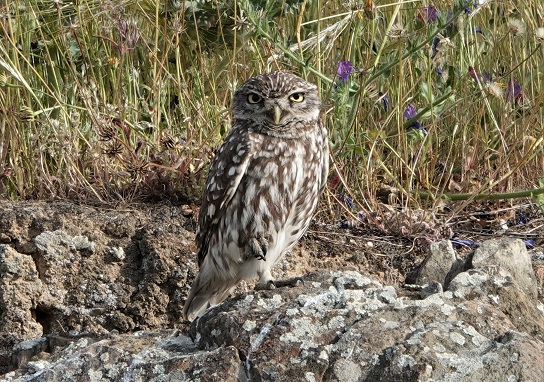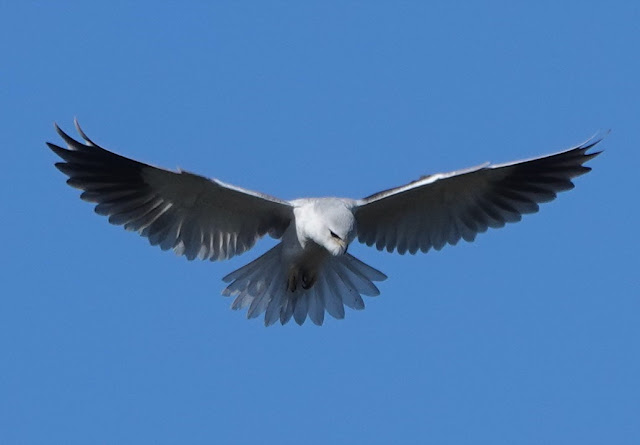Walking on the Wild Side
 |
| The Fortress of Hornachos (Martin Kelsey) |
The immense quartzite crests rise above the gentle undulations of the red-earthed Tierra de los Barros, forming a landmark visible from a huge distance. The Sierra Grande de Hornachos, reaching over 950 metres above sea-level, is the tallest and most impressive of the sierras in the centre of the province of Badajoz. Looking at a relief map of Extremadura, these ridges appear as dispersed ripples, but stand anywhere is this vast landscape and you will see these sierras taking on the perspective of galleons, with Hornachos the flagship of the fleet. It both dominates and yet also gives out an aura of remoteness. Indeed, whilst conscious of its presence everytime I venture into this part of the region, I had rarely, unforgiveably, reached out to explore it.
Crowning the western crest are the remains of the Moorish fortress and tucked below it is the town Hornachos. From this vantage point the sense of isolation is profound and indeed, the town remained as an enclave of the Moriscos (Muslims who converted or were coerced into the Christian faith) well after the Reconquest by the Christian forces in 1232. Right up to the start of the 17th century, the town's population was 10,000 and one of the most largest Morisco centres in Spain and, unlike many others, openly practiced their Muslim faith, largely thanks to the remoteness of the community. However, in 1609, under order from King Phillip III, the Moriscos were expelled. They settled in Morocco, close to modern-day Rabat. Subsequently the town went into decline and today the population is less than half of that in medieval times.
The Sierra Grande erupts from the surrounding dehesas and olive fields with abrupt impressive crags and ancient scree slopes clothed with wild olives, cork oak and junipers. It was the latter that prompted our visit, their berries being an important food source for wintering Ring Ouzels. The distribution of the species as shown in the Spanish Winter Birds Atlas has just a single ten kilometre square marked for Extremadura, close to the border with Andalucia, which is the most important wintering area in Iberia. Juniper is found more commonly in the southern half of Extremadura, on the rocky slopes of these sierras, than in the north. The fieldwork for the Atlas took place between 2007 and 2010. Since then there has been an increase in the number and effort of birders in the southern Extremadura, with a concomitant increase in the number of records of Ring Ouzel. Most of these records may be of birds of passage, but perhaps there are more wintering Ring Ouzels here than we have thought.
 |
| At the edge of Hornachos, Fuente de los Cristianos (Martin Kelsey) |
We found a track ascending the lower slopes beside the town. High above us the mountain side stippled with juniper drew us on invitingly. A small valley provided terrain for smallholdings and allotments, a tiny patchwork of olives, figs and oranges. The place was full of birds, numerous Blackcaps and Song Thrushes feasting on berries. Suddenly a larger thrush swept in and landed proudly right on top of a large fig tree. It exuded a sense of the wild. Its long tail was slightly cocked, its slender neck stretched. There was something almost windswept about its chemistry, as if it has brought with it a dose of distant mountain tops. We did not need to see its bold white crescent on its breast. nor the frosted edgings to its wings to know that we had been greeted by a male Ring Ouzel. It stood poised and then dropped into an adjacent tree. Here suddenly it became remarkably concealed. I pointed the camera at where I thought it had plunged and when checking the photos afterwards was amazed to find that two of them actually showed part of this enigmatic bird with its white chest band.
 |
| Male Ring Ouzel (Martin Kelsey) |
Blackbirds too were present, looking stockier and less elegant than the Ring Ouzel, but making it their business to push this intruder away. From the same tree, another bird erupted and, with a powerful direct flight, swooped up to land on an almond tree. It sleekness betrayed its identity: another Ring Ouzel. This was a browner first-winter bird, with scalier underparts but bearing the same pale edgings on the upper part of the closed wing.
 |
| Ring Ouzel (Martin Kelsey) |
Although we did make a short venture to the edge of the juniper area, where we failed to find any more of our quarry, we spent most of the rest of the morning beside this busy area at the edge of the town. The Ring Ouzels teased us with more short exposures between the foliage and low, long, straight flights, sometimes giving their cut-off chack calls. An Iberian Grey Shrike perched on a cable over a tumbledown house. There a male Black Wheatear also stood, before flying up the hillslope, its fanned, white-based tail shining like a beacon. A bird too of the wild side of this hidden enclave.
 |
| At the edge of Hornachos (Martin Kelsey) |



Comments
Uganda birding safaris